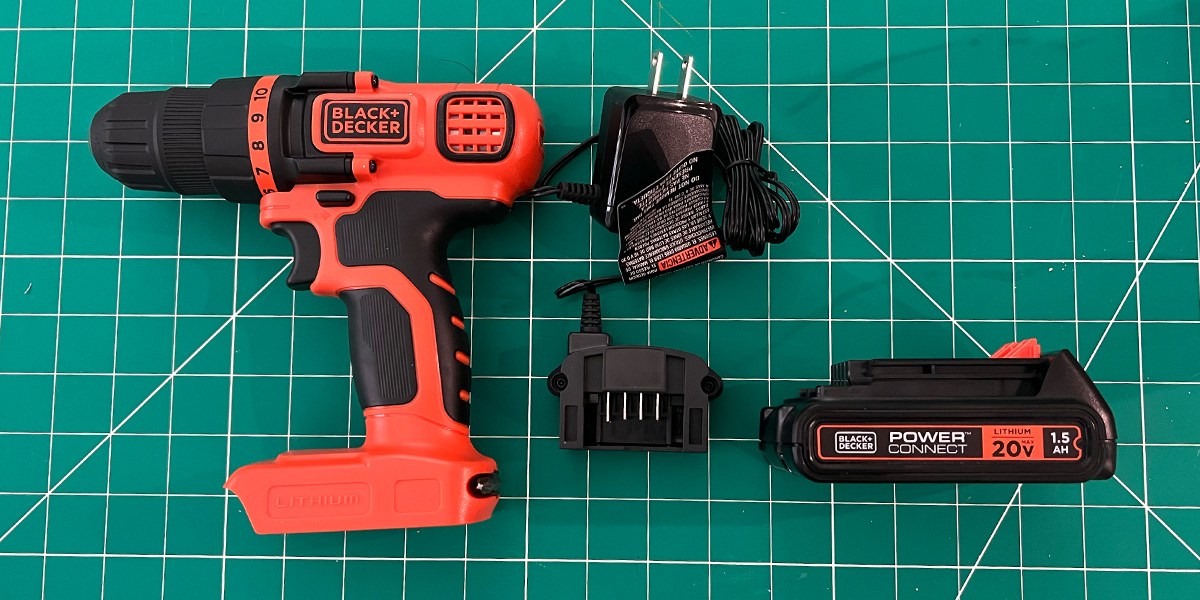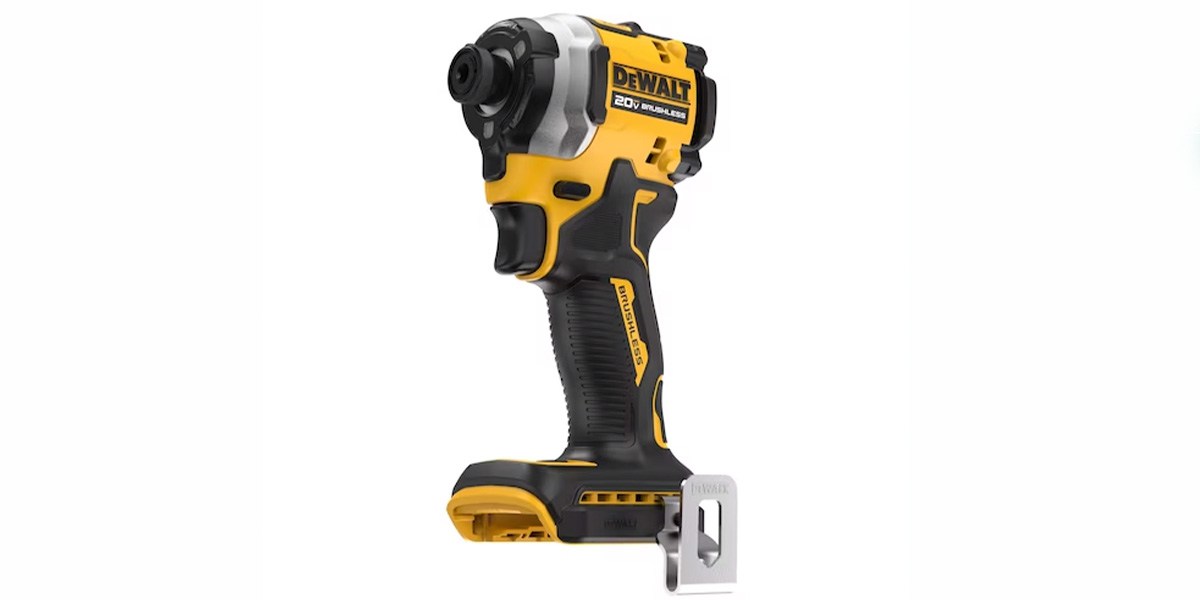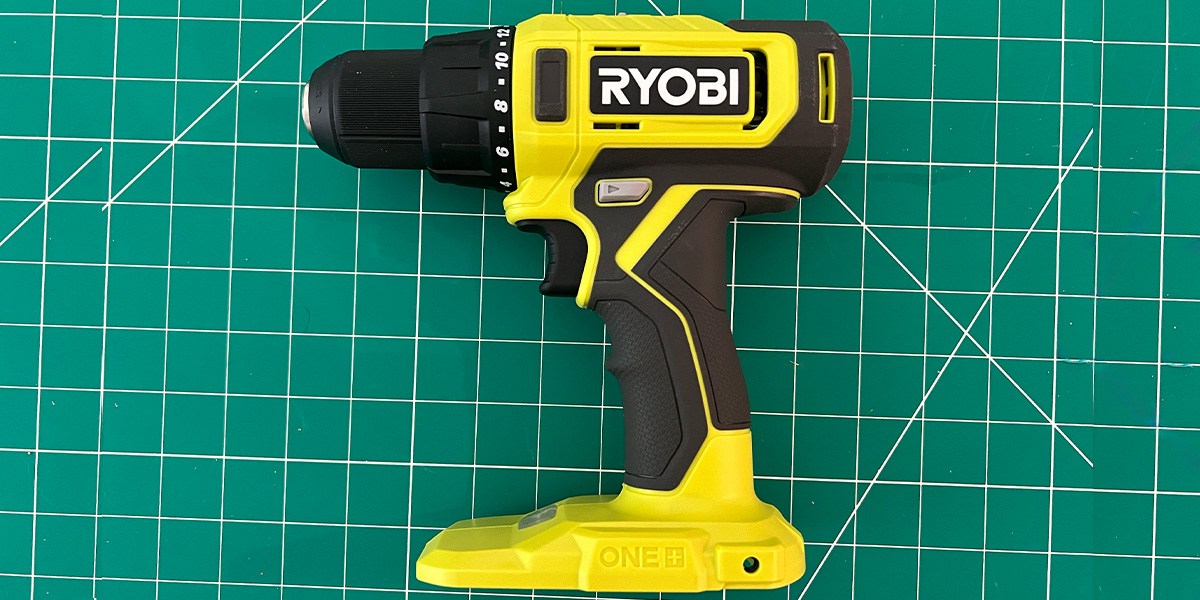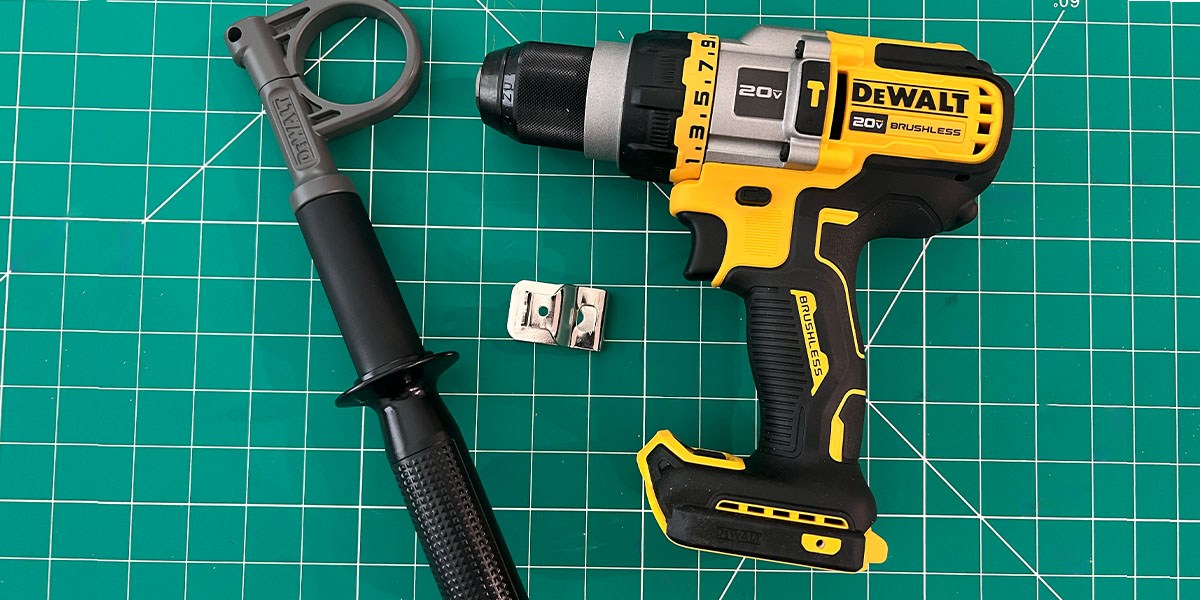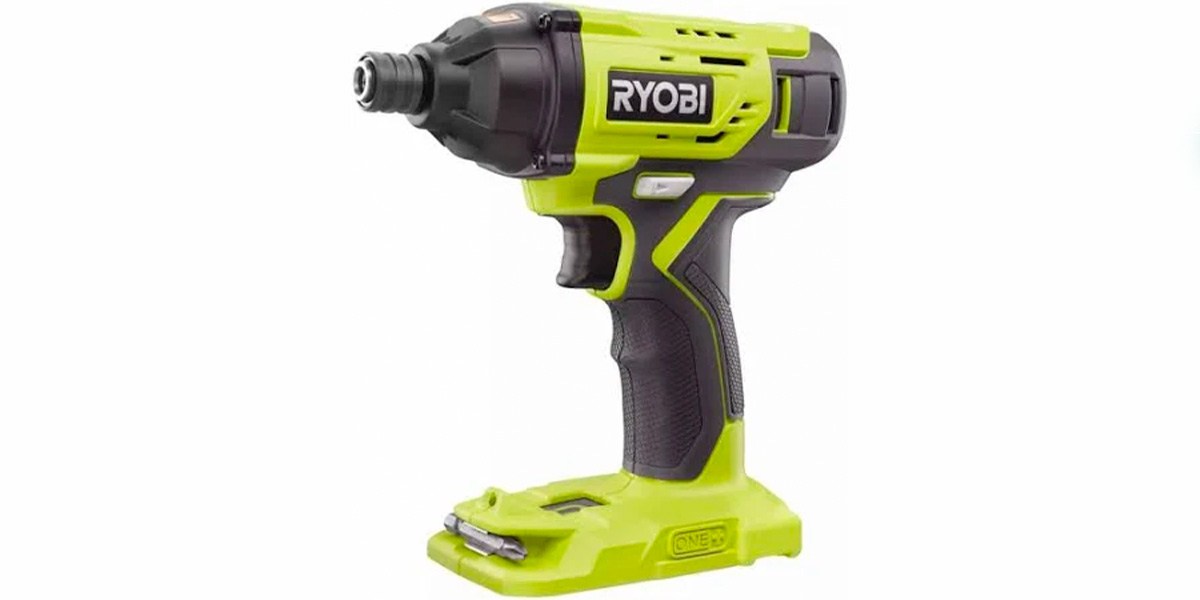Impact drivers and drills do similar jobs, but it can still be worthwhile to have one of each
Two of the most common power tools are the impact driver and the power drill. They take care of similar tasks, so why would you need to own both instead of just one?
You wouldn’t if you only plan to do some maintenance around your home, maybe build some flat-pack furniture or take on a small creative project. A good power drill probably has all the capability you need. The BestReviews Testing Lab compared seven drills to recommend the one we thought best.
If you’re a craftsperson or planning to be one, then you want both tools: the drill to get through the toughest materials and the impact driver to drive any fastener and screw.
Impact driver vs. drill: What they do well
Impact drivers and drills are different enough that it can be beneficial to have both on hand.
Impact drivers and drills each have their unique strengths. Here’s how they can benefit you.
Impact driver benefits
- Torque: Impact drivers have extremely high torque, the term for the force that rotates an object on its axis. It can be as high as or more than three times the torque of a drill.
- Speed: Impact drivers have more rotational speed than drills, though the difference isn’t as stark as that of torque. Speed and torque are the reason an impact driver can easily drive what a drill can’t.
- Size: Impact drivers are almost always smaller than comparable drills, making them easier to use for longer periods.
Drill benefits
- Weight: Power drills are heavier than impact drivers, making it easier to drill through different materials.
- Versatility: A drill’s chuck is much larger than an impact driver’s, so it can hold a larger array of bits for drilling all sizes of holes through all types of materials.
- Features: Drills usually offer more features than impact drivers, such as clutch settings and gears or an extra mode for hammer drilling.
What they don’t do well
Neither one is perfect for every situation. These are the notable drawbacks for impact drivers and drills.
Impact driver drawbacks
- Drilling performance: Just because an impact driver can drill, doesn’t mean it should. If you have a lot of drilling to do, get a drill. The impact driver’s smaller chuck is a drawback here, too.
- Single purpose: Driving really is all an impact driver is good for. You can try to use it in other ways in a pinch, but it’s easier to use the right tool for the job.
Drill drawbacks
- Driving performance: Drills can do driving tasks but not always easily. For example, you might need to first drill a pilot hole to get through a tough material.
- Size and weight: Most drills are slightly bigger and heavier than impact drivers, and can be considerably so. This makes them harder to use for tasks that take a long time.
Top impact drivers
There are plenty of top impact drivers to choose from. One of the best higher-end drivers is the DeWalt Atomic 20-Volt Max, while one of the best budget drivers is the Ryobi One+ 18-Volt Impact Driver.
DeWalt Atomic 20-Volt Max Impact Driver
This impact driver doesn’t come with a battery or charger, but it’s compatible with many DeWalt batteries if you already have one or two.
Product Specifications
Maximum Rotational Speed: 9,200 rpm | Maximum Power: 300 W | Maximum Torque: 1,700 in-lb | Voltage: 20 | LED Work Light: Yes
The DeWalt Atomic is a lightning-fast impact driver with plenty of power for driving any fastener into any material. Because it has a variable-speed trigger, you can also take advantage of using only the rotational speed you need. It’s helped by a top-notch torque peak of 1,700 inch-pounds.
Its brushless motor is efficient and high-performing, and its tiny 5.1-inch length helps it get into the tightest spaces. It also has a bright work light and comes with a belt clip for easy travel between tasks.
Ryobi One+ 18-Volt Impact Driver
You can attach a belt loop to the side of this impact driver or use a lanyard tied on the back of the foot of the driver to make it easier to carry.
Product Specifications
Maximum Rotational Speed: 2,800 rpm | Maximum Power: NA | Maximum Torque: 1,800 in-lb | Voltage: 18 | LED Work Light: Yes
Despite costing about half as much, this Ryobi impact driver can handily compete with the DeWalt Atomic thanks to its slightly better torque maximum of 1,800 inch-pounds, but its much lower max rotational speed means that the task will take longer.
This, like most Ryobis, shares the same kind of batteries between tools, so you can use almost any item in your Ryobi collection with ease. That makes this impact driver, as well as the Ryobi drill, a powerful and affordable tool for anyone who needs both but wants to save some money.
Top drills
We know through our rigorous tests that DeWalt and Ryobi also make top-tier drills. Among the best are the DeWalt FlexVolt Advantage 20-Volt Max Hammer Drill and the Ryobi One+ 18-Volt Cordless Drill.
DeWalt FlexVolt Advantage 20-Volt Max Hammer Drill
The hammer drilling mode on this drill is very powerful, so don’t use it if you don’t have to or you could damage your work.
Product Specifications
Maximum Rotational Speed: 2,250 rpm | Maximum Power: 300 W | Voltage: 20 | Gears: 3 | LED Work Light: Yes
The FlexVolt’s drilling performance was close to the top of the drills we tested. A 1-inch hole saw took only 15 seconds to punch through a two-by-four, only four seconds to go through 16-gauge sheet metal with a quarter-inch bit and six seconds to go through 16-gauge sheet metal with a half-inch bit. We also tested its hammer drilling mode on a cinder block, and it took just three seconds to punch through. It did struggle to make a hole through wood with a paddle bit because the bit caught frequently on the wood, but tests when it didn’t catch took only five seconds. This drill’s driving performance was also strong, taking five to six seconds to drive a 3-inch wood screw into a four-by-four.
Other excellent benefits of the DeWalt FlexVolt include great battery efficiency, an included belt clip and an extra handle for hammer drilling. Its durability is a bit of a concern — its tip got dented in our drop test — but its functionality didn’t suffer. One of our favorite aspects of this drill is its LED work light, which has three settings, while lights on most drills and other tools only have one.
Ryobi One+ 18-Volt Cordless Drill
Be careful. The tip of the plastic foot is surprisingly rubbery. If you drop the drill on its foot (without a battery), it can spring back and go flying.
Product Specifications
Maximum Rotational Speed: 1,750 rpm | Maximum Power: NA | Voltage: 18 | Gears: 2 | LED Work Light: Yes
The driving performance of this Ryobi drill was similar to that of the DeWalt, taking the same amount of time but much more effort to control. For drilling, its only issue is that it sometimes takes longer than high-end drills. It took 30 seconds to punch through wood using a hole saw, for example, and 13 seconds to drill a half-inch hole through 16-gauge sheet metal. However, it also took five seconds to put a quarter-inch bit through metal and five seconds to drill a hole with a paddle bit, with almost no catching issues.
The two-amp-hour battery we bought for testing lasted a respectable 30 to 40 minutes. The drill suffered so little damage in our drop tests that it looked practically new afterward. The only flaw we could find in the drill is that its work light is too dim to be of much help in all but the darkest of environments, plus it doesn’t come with a belt clip.
Impact driver vs. drill functionality
The function of both devices is to drive and drill, but it’s worth taking a closer look at these tasks and how each tool does them. We also compare the accessories that come with each tool.
Driving comparison
Driving here means twisting a screw into a material. Both an impact driver and a drill accomplish this task using rotational force (torque) and rotational speed (measured in rotations per minute). Impact drivers have much more torque and faster rotational speeds than drills so they can twist a screw harder and faster. This enables them to push into materials that a drill may struggle to pierce (or require the drilling of a pilot hole first).
Drilling comparison
Drilling uses a bit, which attaches to the chuck at the drill tip, to make various sizes of holes in materials. For most drills, you need to use your muscles or body weight to push the drill into the material. Hammer drills apply extra force while drilling, similar to using a hammer on the back end of the drill (hence the name).
Drills are better than impact drivers for drilling in several ways, including hammer drilling and the extra heft that helps them push into tough materials. But the biggest benefit is that they have a larger chuck. This gives the average drill far more versatility than the average impact driver when it comes to what materials it can go through and the size of holes it can make.
Accessory comparison
You can purchase either tool without a battery or charger or in a kit that includes a battery and charger, storage bag and/or other accessories and bits. Power drills use more accessories, so they usually come with some, perhaps a belt clip, maybe a bit and sometimes an extra handle to attach to a hammer drill for more stability and control. Tool-only impact drivers sometimes come with a belt clip, but most come with no extras.
Pricing
When you look at the cost of impact drivers and power drills, without regard to brand, you find that they typically cost $50 to $150. When you factor in brand, you can find budget tools of both kinds in the $50 to $100 range, while higher-end brands fall in the $100 to $150 range. When you look at prices from a single brand, you’ll typically find that impact drivers cost slightly less than comparable power drills.
The tools in this article cost the following:
- DeWalt Atomic 20-Volt Max Impact Driver: $119
- DeWalt FlexVolt Advantage 20-Volt Max Hammer Drill: $139.99
- Ryobi One+ 18-Volt Impact Driver: $45
- Ryobi One+ 18-Volt Cordless Drill: $53.99
Bottom line
Both drills and impact drivers are worth buying, so whether you need one or both comes down to the tasks you need to accomplish. If you don’t build things from scratch or renovate houses, it’s unlikely you’d ever require the extra torque provided by an impact driver. Stick to a good power drill like the DeWalt FlexVolt. It can complete any standard home maintenance task and then some.
Prices listed reflect time and date of publication and are subject to change.
Check out our Daily Deals for the best products at the best prices and sign up here to receive the BestReviews weekly newsletter full of shopping inspo and sales.
Copyright 2024 BestReviews, a Nexstar company. All rights reserved.


